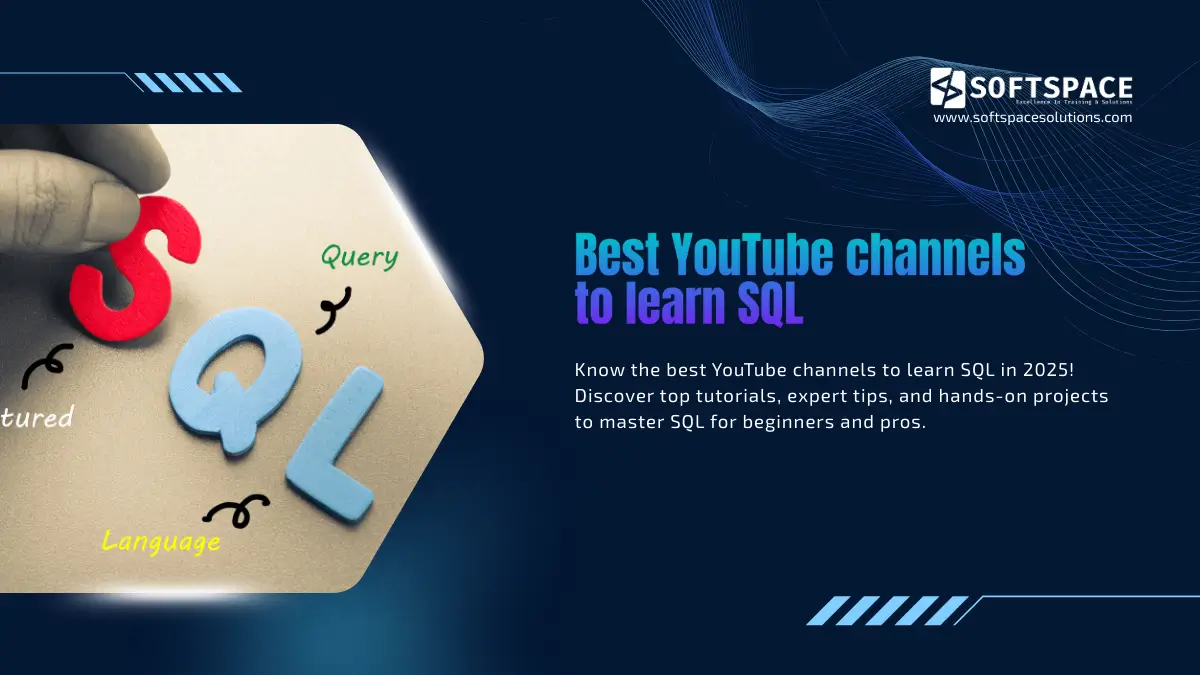What Is Social Media Management?
Social media management is the strategic art of planning, publishing, and optimising content across platforms to grow and engage an audience, strengthen brand identity, and drive measurable business growth.
It involves everything from crafting engaging posts, building active communities, and monitoring brand reputation, to analysing performance metrics to continually refine your social strategy.
Why It Matters? Key Benefits & Stats
- Marketing efficiency: Social media management often costs under 15% of a typical marketing budget, yet provides outsized ROI through brand building, traffic, loyalty, and revenue.
- Massive global reach: As of April 2025, over 5.31 billion social media identities exist globally, around 63% of the world population.
- Audience influence: According to Sprout Social, 90% of consumers regularly use social media to follow brands and trends.
Business impact: InMoment found that:
- 56% of marketers saw brand awareness spike within 12 months of consistent social management.
- 77% reported increased brand recognition after just 1–2 years.
- Only 44% generate leads within the first year, but this rises to 66% after three years.
Did You Know? According to recent studies, brands that actively engage on social media see a significant boost in customer loyalty and brand awareness!
What is Social Media Management in Today’s Digital Landscape?
The strategic process of producing, planning, evaluating, and interacting with content on multiple social media platforms in order to increase brand recognition, encourage community involvement, and boost business outcomes is known as social media management.
It includes everything from creating engaging content to answering consumer questions and tracking the effectiveness of campaigns.
Effective social media management has become crucial for companies of all sizes in today’s digital environment.
Understanding what is social media management and why it is essential for your success, regardless of whether you’re a startup trying to build your brand or an established business trying to improve relationships with your customers.
What is Social Media Management? Practically
In order to establish a consistent online presence, social media management entails a number of interrelated tasks. Fundamentally, it’s about developing deep relationships with your audience while furthering your corporate goals.
Important Elements of Social Media Management
- Content Creation and Curation: Creating original posts, images, videos, and narratives that appeal to your target audience
- Community Management: Interacting with followers, answering their comments, and starting discussions
- Strategic Planning: Developing thorough social media plans in line with corporate objectives
- Reporting and Analytics: Tracking performance indicators and modifying plans in light of data insights
- Brand Voice Development: Keeping the tone and messaging the same on all platforms
All these activities will need a set of social media marketing tools to help you ease and optimise your work.
The Importance of Social Media Management for Your Company
Social media management is much more important than just sharing content. This is the reason it has become essential:
Increasing Recognition and Brand Awareness
Maintaining a consistent, high-quality social media presence aids in building your brand’s recognition among prospective clients. You build familiarity and trust through consistent interaction and insightful content, which opens up business opportunities.
Promoting Client Loyalty and Engagement
Social media platforms offer special chances to communicate with your audience in both directions. Stronger relationships and brand advocates who actively promote your company are produced by this direct interaction.
Creating Sales and Leads
Social media accounts that are properly maintained are effective sales tools. Social media platforms can have a big impact on your business by promoting your products and driving traffic to your website.
Delivering Outstanding Customer Service
Consumers of today anticipate prompt social media responses. Good management guarantees prompt, friendly customer service, which raises retention and satisfaction.
Investment and Costs of Social Media Management
Setting reasonable expectations and creating an efficient budget are made easier when you comprehend the financial facets of social media management.
Crucial Components of Successful Social Media Administration
Development of Content Strategies
The cornerstone of effective social media management is developing a strong content strategy. This entails figuring out when to post, knowing your audience’s preferences, and creating content themes that complement your brand values.
Considerations for Content Planning
- Audience demographics and interests
- Platform-specific formats for content
- Seasonal patterns and business events
- Consistency in brand messaging
- A mix of educational, entertaining, and promotional content
Platform-Specific Methods
Each social media platform requires customised strategies:
- Facebook: Community building, long-form content, customer support
- Instagram: Product showcases, behind-the-scenes content, visual storytelling
- Twitter (X): News updates, real-time interaction, quick support
- LinkedIn: Professional updates, thought leadership, B2B networking
- TikTok: Creative, entertaining content for younger audiences
Performance Measurement and Analytics
Evaluating your performance is essential to determine what works.
Benchmarks for Engagement Rates by Platform
- Instagram: 3%+ excellent, 1.22% average
- Facebook: 1%+ excellent, 0.27% average
- Twitter: 0.1%+ excellent, 0.045% average
- LinkedIn: 2.61% mediocre, 5%+ superior
- TikTok: 9%+ excellent, 5.96% average
Additional Crucial Metrics
- Reach and Impressions: How many people view your content
- Click-Through Rate (CTR): 0.9% average
- Conversion Rate: 1%–3% typical
- Follower Growth: 1%–5% monthly growth
- Response Time: Under 1 hour during business hours
Examples of Real-World Social Media Management
Case Study 1: Chain of Local Restaurants
- Difficulty: Boost online sales and foot traffic
- Strategy: Behind-the-scenes videos, daily food photography, customer highlights
- Outcomes: 23% increase in online orders, 45% increase in Instagram followers
Case Study 2: B2B Software Company
- Difficulty: Create thought leadership and qualified leads
- Strategy: Industry insights, webinar promotion, LinkedIn articles
- Outcomes: 34% more demo requests, 156% increase in LinkedIn engagement
Case Study 3: E-commerce Fashion Brand
- Challenge: Increase Gen Z brand awareness
- Strategy: UGC campaigns, influencer collaborations, TikTok challenges
- Outcomes: 67% more website visits, 2.3 million TikTok views
🛠️ Social Media Management Tools Pricing
| Tool Name | Category | Monthly Price (INR) | Features | Website |
|---|---|---|---|---|
| 📅 BASIC SCHEDULING TOOLS | ||||
| Buffer | Scheduling & Publishing | ₹1,560 – ₹5,200 | Multi-platform posting, basic analytics | Visit Site |
| Hootsuite | Scheduling & Monitoring | ₹1,560 – ₹5,200 | Team collaboration, monitoring, scheduling | Visit Site |
| Later | Visual Scheduling | ₹1,040 – ₹4,160 | Visual content calendar, Instagram focus | Visit Site |
| 🚀 EXPERT PLATFORMS | ||||
| Sprout Social | Enterprise Management | ₹10,400 – ₹52,000 | Advanced analytics, CRM, team collaboration | Visit Site |
| Brandwatch | Social Listening | ₹15,600 – ₹52,000 | Social listening, brand monitoring, AI insights | Visit Site |
| Socialbakers | AI-Powered Analytics | ₹12,480 – ₹41,600 | AI content optimization, competitor analysis | Visit Site |
| 🎨 DESIGN SOFTWARE | ||||
| Canva Pro | Graphic Design | ₹1,560 – ₹3,120 | Templates, brand kit, stock photos | Visit Site |
| Adobe Creative Cloud | Professional Design Suite | ₹2,080 – ₹5,200 | Photoshop, Illustrator, Premiere Pro | Visit Site |
| Figma | UI/UX Design | ₹1,248 – ₹3,744 | Collaborative design, prototyping | Visit Site |
| 📊 ANALYTICS TOOLS | ||||
| Google Analytics | Web Analytics | Free – ₹15,600 | Website traffic, conversion tracking | Visit Site |
| Semrush | SEO & Social Analytics | ₹5,200 – ₹20,800 | Keyword research, competitor analysis | Visit Site |
| Socialblade | Social Media Analytics | ₹312 – ₹2,496 | Channel statistics, growth tracking | Visit Site |
Social media management tools help you streamline content scheduling, performance tracking, and audience engagement across multiple social platforms. These technologies improve your work efficiency, consistency, and data-driven decision-making for all kinds of social business profiles.
Building a Social Media Management Strategy
Establishing the Foundation
Days 1–2: Platform Configuration and Selection
- Choose 2–3 platforms based on audience research
- Optimise company profiles with consistent branding
- Set up business accounts for analytics access
Days 3–4: Integration and Tool Selection
- Choose a scheduling tool that fits your budget
- Set up analytics and conversion tracking
- Subscribe to content design tools
Days 5–7: Framework for Content Planning
- Define brand voice and visual style
- Create categories like promotional, behind-the-scenes, and educational
- Use a content calendar to plan the first month
Execution and Improvement
📅 Consistent Posting
Post consistently 3–5 times a week to maintain audience engagement and platform algorithm favor
💬 Daily Engagement
Spend 30+ minutes daily engaging with your audience through comments, messages, and community interaction
📊 Weekly Analytics Review
Review weekly analytics and optimize content strategy based on performance metrics and insights
🤝 Network Building
Network with influencers and partners to expand reach and build valuable industry relationships
Role Definitions and Team Structure
Small Enterprise (1–2 Personnel)
- Social Media Generalist: Handles all aspects
- Time Commitment: 10–15 hours/week
Medium-Sized Enterprise (3–5 Employees)
- Social Media Manager: Strategy and oversight
- Content Producer: Written and visual content
- Community Manager: Daily engagement and support
Big Business (6+ Employees)
- Director of Social Media: Strategy and leadership
- Platform Specialists: Manage individual channels
- Content Team: Copywriters, videographers, designers
- Analytics Expert: Performance and reporting
- Community Managers: Customer engagement
Decision Matrix: In-House vs. Agency vs. Freelancer
Choose In-House When:
- Daily content is needed
- Brand tone requires internal knowledge
- Budget exceeds £25,000/year
- Rapid response is crucial
Choose an Agency When:
- You need end-to-end planning and execution
- Lack of internal expertise or resources
- You want access to advanced tools
- Budget exceeds £2,000/month
Choose a Freelancer When:
- Needs are project-based
- Budget is under £1,500/month
- Clear guidance and flexibility are key
Clearly Defined Goals
Define specific objectives such as:
- Brand awareness
- Sales and leads
- Customer satisfaction
- Community engagement
- Thought leadership
Determining Your Target Market
Understand your audience’s:
- Demographics
- Interests
- Online habits
- Preferred platforms
Making a Calendar of Content
A good calendar includes:
- Posting times and dates
- Content topics and themes
- Platform-specific versions
- Seasonal and promotional content
Creating Brand Standards
Consistency builds recognition and trust. The following factors are a must-follow for a brand voice:
- Visual style (colours, fonts, logos)
- Voice and tone
- Content categories
- Posting frequency
Typical Social Media Management Issues and Their Fixes
Effectively Handling Several Platforms
Solution: Repurpose core content and use management tools to streamline tasks.
Sustaining Regular Participation
Solution: Prioritise customer queries, use auto-responses, and set clear engagement goals.
Calculating ROI
Solution: Define KPIs, track data accurately, and report consistently.
ROI Formula: (Social Media Revenue – Costs) ÷ Costs × 100
Revenue Attribution Methods
- UTM tracking
- Social-only discount codes
- Dedicated landing pages
- Customer surveys
Overseeing the Production of Content at Scale
Solution: Use content repurposing systems.
Content Multiplication Strategy
- Create one core piece (e.g., blog or video)
- Break into 5–7 social posts
- Adapt for different platforms
- Extract quotes or clips
Keeping Up with Platform Updates: Stay active in industry communities and attend webinars or training.
Social Media Reports
Social Media Reports provide a structured overview of your social media performance over a specific period. These reports include key metrics such as engagement rates, follower growth, reach, impressions, click-through rates, and conversions.
They help businesses assess what’s working, identify areas for improvement, and make informed decisions to refine their strategy. Social media reports can be generated weekly, monthly, or quarterly and are essential for tracking ROI, communicating results to stakeholders, and aligning social media efforts with overall business goals.
What’s The Future of Social Media Management?
Emerging trends shaping the digital marketing landscape in 2025 and beyond
Integration of Artificial Intelligence
AI will continue aiding content creation, scheduling, and targeting. Machine learning algorithms will revolutionize how brands connect with their audiences through intelligent automation and predictive analytics.
Content Strategies Focused on Videos
Short-form video will remain central. Learn to create and edit engaging clips that capture attention within seconds. Vertical video content dominates mobile consumption patterns.
Micro-targeting and Personalisation
Hyper-personalised content will increase engagement and ROI. Advanced data analytics enable precise audience segmentation and customized messaging for maximum impact.
Growth of Social Commerce
Shopping directly through platforms will become the norm. Social media transforms into comprehensive shopping destinations with seamless purchase experiences integrated into content.
Including Social Media in Your Marketing Plan
Your social media should be a part of your overall marketing plan, not a separate channel. You can do this by making sure that your social media is in line with your business goals and that your messaging is consistent across all of your touchpoints.
To successfully integrate, you need to coordinate your social media activities with your email marketing, content marketing, and traditional advertising efforts. This will give customers a consistent experience that promotes your brand message at every engagement.
This all-encompassing method gets the most people to see your posts, makes it easier to identify where they came from, and makes sure that your social media activities have a direct impact on measurable business outcomes instead of working on their own.
Best Practices for Omnichannel Integration
Email Marketing
- Use lead magnets
- Share email content on social
- Promote exclusive deals
SEO and Content Marketing
- Share blog content on social
- Use social hashtags to guide SEO
- Encourage link sharing
Paid Advertising
- Retarget site visitors via social
- Create lookalike audiences
- Align messaging across ads
Customer Service Integration
- Connect CRM to social tools
- Train support teams
- Track feedback to improve CX
Content Strategy Across Platforms
Adaptation Framework
- LinkedIn: Professional, long-form
- Instagram: Lifestyle, visual
- Twitter: Real-time updates
- Facebook: Community, events
- TikTok: Trendy and authentic
Content Calendar Integration
- Launch campaigns across channels
- Coordinate timing
- Keep messaging consistent
- Track performance holistically
Market Intelligence and Competitive Analysis
Keeping an Eye on Rival Activity
Track:
- Posting frequency
- High-engagement content
- Trending hashtags
- Customer service responsiveness
- Ad strategies
Competitive Analysis Tools
- Native platform tools
- Brandwatch, Mention, Hootsuite Insights
- Benchmarking platforms
- Manual tracking via spreadsheets
📊 Social Media Industry Engagement Benchmarks
🛒 E-commerce/Retail
🏢 B2B Services
🍔 Food & Beverage
🏥 Healthcare
Final Thoughts: Getting the Hang of Social Media Management
Managing social media is both an art and a science that calls for analytical abilities, strategic thinking, and inventiveness. Understanding your audience, producing worthwhile content, and regularly interacting with your community while tracking and refining your efforts are the keys to success.
The important thing is to approach social media management methodically and strategically, regardless of whether you decide to manage it internally or with outside experts. Social media management has the potential to be one of your most effective business growth drivers with the correct resources, methods, and dedication.
Keep in mind that managing social media is a continuous process that calls for patience, perseverance, and flexibility. Businesses that stay adaptable while upholding their core brand values and customer focus are the ones that succeed as platforms change and audience preferences change.
You will be prepared to use social media to your company’s advantage if you put the tactics and best practices described in this guide into practice.












